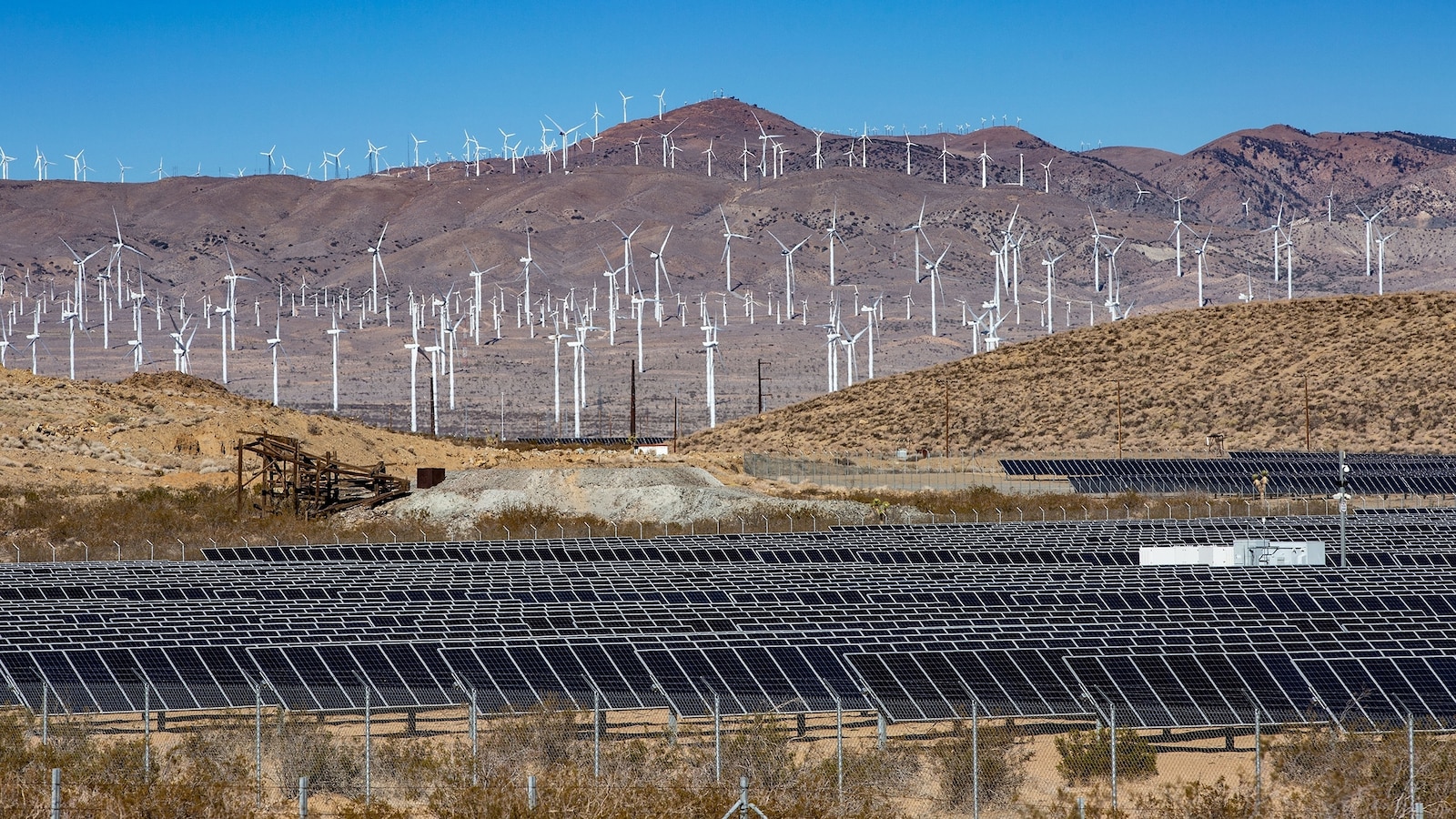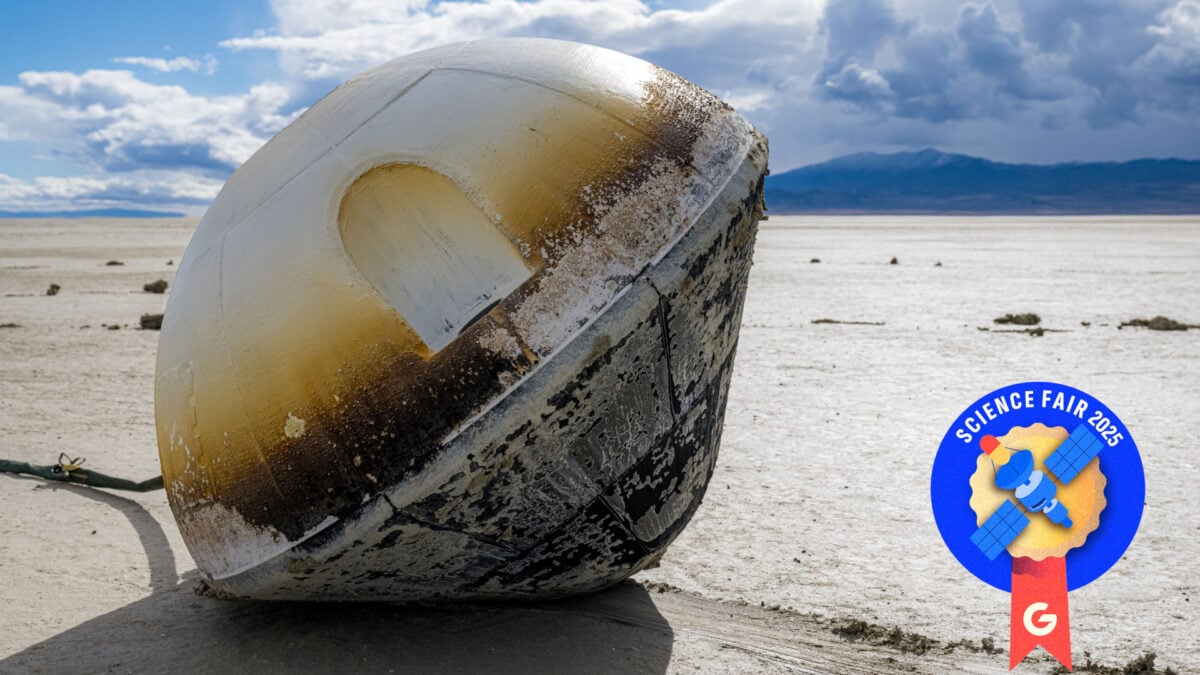
President Donald Trump spent a considerable amount of his address to the United Nations General Assembly on Tuesday disparaging renewable energy sources and challenging the scientific consensus on climate change.
Among the president’s remarks were unsubstantiated claims about climate change, renewable energy sources and the environment.
Trump claimed that clean energy sources, such as solar and wind, don’t work and are more expensive than fossil fuel options. He also said the U.N. was incorrect in its predictions about the consequences of climate change. And the president repeatedly warned that the economics of renewable energy are harming the economy and resulting in higher energy costs.
The president explained that he withdrew the United States from the Paris Agreement, which he called a “scam,” because the U.S. wasn’t being treated fairly and that other countries had different expectations. He added that the “United States has been taken advantage of by the world for many, many years, but not any longer.”
The ABC News weather, climate and science unit fact-checked some of the energy and climate claims the president made during his U.N. speech.
Trump claim: The president said renewable energy sources “don’t work” and are “too expensive.” The president called them a “joke” and said they are not powerful enough to handle modern infrastructure and are unreliable.
Fact check: In 2024, 80% of the growth in global electricity generation was from renewable and nuclear sources, contributing 40% of the world’s total electricity generation for the first time, according to the International Energy Agency (IEA). Solar and wind accounted for 16% of the United States’ electricity, surpassing coal.
Renewable energy sources, including solar, wind and hydropower, are forecast to meet approximately 95% of global electricity demand growth through 2027.
More than 90% of new renewable projects are now cheaper than fossil fuel alternatives, according to the International Renewable Energy Agency (IRENA). In 2024, solar photovoltaics (PV) were, on average, 41% cheaper than the lowest-cost fossil fuel alternatives, while onshore wind projects were 53% cheaper.
Trump claim: The president stated that while China produces most of the world’s wind technology, it does not utilize wind technology and instead relies on coal and gas.
Fact check: In 2024, solar and wind accounted for 20% of China’s electricity generation, according to the IEA. However, last year, China remained the world’s largest coal consumer, accounting for a record 58% of global coal use.
Trump claim: The president said Europe is struggling financially because its leaders are deciding to adopt renewable energy and that Germany has pulled back on its commitment to renewable energy.
Fact check: On September 15, 2025, German Federal Minister for Economic Affairs and Energy Katherina Reiche said, “The expansion of renewable energies is undoubtedly a great success,” mentioning that 60% of their electricity comes from wind, solar and other sources. The Minister did emphasize that Germany’s energy transition is at a “crossroads” and that “success, reliability, security of supply, affordability and cost effectiveness must become the focus.” The Minister’s office maintains that it is committed to obtaining 80% of its electricity from renewable energy sources by 2030.
Trump claim: The president said that the U.N.’s predictions about the impacts of climate change have not come to fruition and that they have been exaggerated or are incorrect. The president called it “the greatest con job perpetrated by the world.”
Fact check: There is overwhelming scientific evidence and consensus from thousands of scientists worldwide that climate change is occurring, is human-caused and poses significant risks to human health, the environment, and the global economy.
The president’s claims are in stark contrast to well-known climate assessments, including the Intergovernmental Panel on Climate Change (IPCC), considered the gold standard of climate analysis and the U.S. National Climate Assessment, which includes contributions from thousands of scientists around the world and undergoes a rigorous years-long process of open and independent review.
The IPCC found that “Human activities, principally through emissions of greenhouse gases, have unequivocally caused global warming.” And the U.S. National Climate Assessment determined that “Human activities, principally through emissions of greenhouse gases, have unequivocally caused global warming” and that “without deeper cuts in global net greenhouse emissions and accelerated adaptation efforts, severe climate risks to the United States will continue to grow.”
And a recent “Consensus Study Report” from the National Academy of Sciences concluded that the “EPA’s 2009 finding that the human-caused emissions of greenhouse gases threaten human health and welfare was accurate, has stood the test of time, and is now reinforced by even stronger evidence.” They added that “human-caused emissions of greenhouse gases and resulting climate change harm the health of people in the United States,” and said the findings are “beyond scientific dispute.”
Trump claim: President Trump said reducing carbon emissions costs jobs.
Fact check: The shift to renewable energy is changing the makeup of jobs in the U.S. economy, not driving a net job loss. Clean energy jobs grew more than three times faster than the rest of the U.S. economy in 2024, according to E2, an environmental nonprofit. Over the last five years, more than 500,000 clean energy jobs have been added, far surpassing the growth in the fossil fuel, gas and diesel motor vehicle sectors. Last year, 82% of all new energy sector jobs were in clean energy, the nonprofit reported.
Trump claim: Europe loses 175,000 people to heat deaths each year because the cost is so expensive that you can’t turn on an air conditioner, and that it’s “all in the name of pretending to stop the global warming hoax.”
Fact check: The World Resources Institute highlights that Europe does lag in air conditioning, but the reasons are nuanced. Many buildings in Europe are designed to retain heat, which makes them challenging to inhabit during summers that are becoming hotter due to climate change, according to research by Climate Central. High costs do contribute to the lack of air conditioning in some regions, particularly lower-income areas. In decades prior, Europe had traditionally seen a milder climate.
However, according to Copernicus, Europe’s Climate Change Agency, Europe has warmed twice as fast as the global average since the 1980s. In 2024, the warmest year on record globally, Europe experienced its second-highest number of days with strong to extreme heat stress. Therefore, the need for air conditioning is a relatively recent development for the continent.
Trump claim: The president said he has a little standing order in the White House for his staff to never use the word coal, without adding “clean, beautiful coal.”
Fact check: Coal contains a significant amount of energy and is extremely abundant. And the United States has more of it than any other place in the world. But coal is also a fossil fuel. When burned, its carbon combines with oxygen, which creates carbon dioxide (CO2). CO2 is a greenhouse gas that traps the Earth’s heat, fueling human-amplified climate change. Burning coal also releases other harmful emissions, including sulfur dioxide, nitrogen dioxides, particulates, mercury, and other heavy metals that can increase the risk of espiratory illness, lung disease, acid rain, smog, and neurological and developmental damage, according to the U.S. Energy Information Administration.
The Clean Air Act and Clean Water Act required the coal industry to reduce the pollutants released into the air and water. According to the U.S. Department of Energy, “Coal-fired electricity generation is cleaner than ever. NETL’s research shows that a new coal plant with pollution controls reduces nitrogen oxides by 83 percent, sulfur dioxide by 98 percent, and particulate matter by 99.8 percent compared to plants without controls.”



